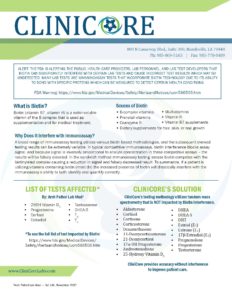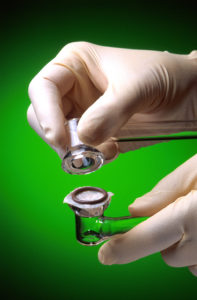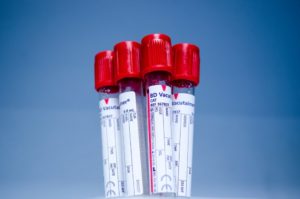
“Ovulation results in a mid-cycle surge of luteinizing hormone (LH) followed by an increase in progesterone secretion, peaking between day 21 and 23. If no fertilization and implantation has occurred by then, supplying the corpus luteum with human gonadotropin-drive growth stimulus, progesterone secretion falls, ultimately triggering menstruation. A day 21 to 23 serum progesterone peak of 6.5 to 7 ng/ml is the minimal level considered consistent with ovulation (emphasis added). A level in excess of 18 ng/ml is considered proof of ovulation.”
Conditions that cause abnormal progesterone levels
- Placental insufficiency has been associated with low levels of LH and progesterone.
- Increased levels of LH and progesterone may be indicative of adrenal or testicular tumors.
Clinicore utilizes an LC-MS/MS based assay and is not impacted by biotin interference found in traditional Immunoassays
For pregnant women, see Ref 28b ( https://www.nlm.nih.gov/medlineplus/ency/article/003714.htm )
· Pregnancy 1st trimester: 11.2 to 90.0 ng/mL
· Pregnancy 2nd trimester: 25.6 to 89.4 ng/mL
· Pregnancy 3rd trimester: 48 to 150 to 300 or more ng/mL
References:
28. http://www.mayomedicallaboratories.com/test-catalog/Clinical+and+Interpretive/8141
28b. https://www.nlm.nih.gov/medlineplus/ency/article/003714.htm (Pregnancy values.)




